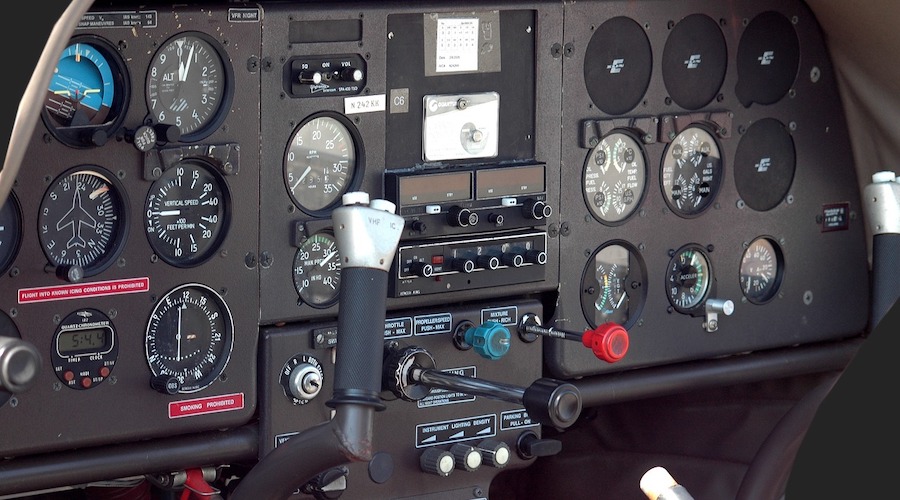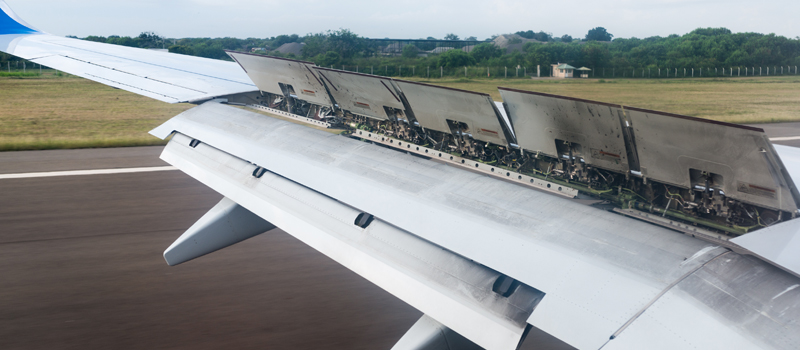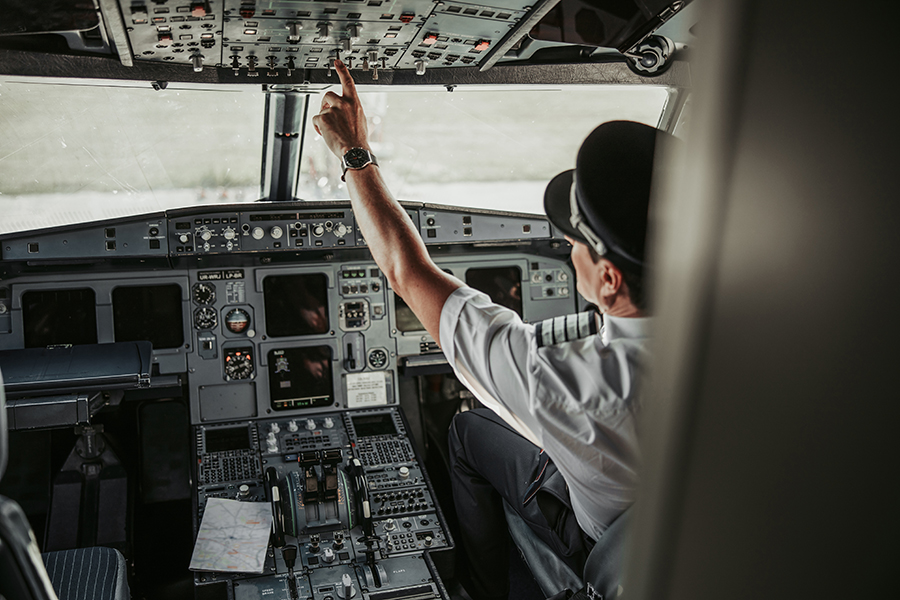-
What is an Instrument Rating?
- Getting Your Instrument Rating
-
Instrument Rating Requirements
-
Instrument Rating Training
- Ground School
- Flight School (Part 61)
- Flight School (Part 141)
-
Instrument Rating Tests
- Aeronautical Knowledge Test
- Practical Test (Checkride)
-
Instrument Rating Privileges & Limitations
-
Instrument Rating Cost
-
Final Thoughts
Flying in clear skies is easy, but how do pilots fly in foggy weather?
Aviators relied on sight to fly aircraft in the early days of aviation, flying without seeing outside the cockpit was impossible for quite some time.
Luckily, Lieutenant James H. Doolittle pulled it off when he conducted the first “blind” flight in 1929.
Nowadays, pilots get an instrument rating (IR), which is an operational privilege that permits pilots to fly solely by reference to aircraft instruments.
But what are the requirements for an instrument rating?
Let’s find out.
The definitions first, though.
What is an Instrument Rating?
The instrument rating is an airman rating obtained following the successful completion of applicable knowledge and practical tests. It grants the holder the privilege of flying according to Instrument Flight Rules (IFR) and solely by reference to aircraft instruments.
The instrument rating is a part of an airman certificate and not a stand-alone document.
Now you know what it is, let’s see what it takes to get it.
Getting Your Instrument Rating
Here’s how you get your instrument rating:
- Confirm you meet the eligibility requirements
- Make sure your medical certificate is valid and current
- Find an instrument rating training course or instructor
- Complete your ground training or home-study course
- Pass your instrument rating written test
- Complete your flight training and get the endorsements
- Pass your instrument rating checkride
Let’s start with the requirements.
Instrument Rating Requirements
You must hold, or be concurrently applying for, a private pilot certificate to get an instrument rating. The prerequisite entails being at least 17 years old and holding a medical certificate.
Interestingly, the instrument rating is only available for three aircraft categories: Airplane, Helicopter, and Powered-Lift.
Whichever category you go for, you must meet the following eligibility requirements:
- Be able to read, speak, write, and understand the English language.
- Receive proper ground instruction, flight training, and logbook endorsements.
- Pass aeronautical knowledge and practical tests.
Additionally, you must have the requisite aeronautical experience. More on that later.
How do you get an instrument rating, though?
You need training.
Instrument Rating Training
The certification process for an instrument rating requires specialized ground and flight training. However, the training varies depending on the type of pilot school, which could operate under Part 61 or Part 141 regulations.
Ground School
Learning the theory behind operating under flight instrument rules (IFR) constitutes an essential step to becoming a proficient instrument-rated pilot.
Flying by reference to aircraft instruments requires a solid understanding of IFR operations, regulations, and systems.
Although, the knowledge you gain is pretty much the same, the way you receive it differs depending on the type of flight school.
In a Part 61 school, you can obtain the necessary ground training from either a certified instructor or by completing a home study course. Pilot Institute offers an Instrument Rating Made Easy online ground school.
On the other hand, a Part 141 school requires completing an approved course with a minimum of 30 hours for an initial instrument rating, or 20 hours for an additional rating.
You may also consider a combined private pilot certification and instrument rating course, which consists of at least 65 hours of ground training.
Flight School (Part 61)
Obtaining an instrument rating for the airplane category requires a minimum of 50 hours of cross-country flight time as pilot in command, including at least 10 hours in an airplane.
You also need to log 40 hours of actual or simulated instrument time, which must include:
- 15 hours with an instructor.
- 3 hours of instrument flight training within two months of the practical test.
- Instrument flight training on cross country procedures.
The last requirement must include a cross country flight under instrument flight rules with:
- A distance of 250 nautical miles along airways or by directed routing.
- An instrument approach at each airport.
- 3 different kinds of approaches using navigation systems.
But you don’t have to accrue all of the required hours in an aircraft.
Here’s how:
You may log up to 10 hours of instrument time in a basic aviation training device (aircraft simulator), or even 20 hours if the simulator is of the advanced variety.
Flight School (Part 141)
In a Part 141 school, the flight training must include at least 35 hours for an initial instrument rating, or 15 for an additional rating.
The percentage of flight hours you can credit in a training device varies depending on its type:
- No more than 50% of the hours in a full flight simulator.
- Up to 40% of them in a flight training device, an advanced aviation training device, or a combination of the two.
- Up to 50% of the required flight time when using a combination of the three.
- Up to 25% when using a basic aviation training device.
Similar to Part 61, the Part 141 instrument rating flight training must include one cross country flight under instrument flight rules. The only difference is that the flight must also consist of at least a straight-line distance of 100 nautical miles between airports.
Lastly, if you opt for a combined private pilot certification and instrument rating course, you must log a minimum of 70 flight hours.
Instrument Rating Tests
As with most types of pilot training, obtaining your instrument rating entails successfully completing aeronautical knowledge and practical tests.
Aeronautical Knowledge Test
The minimum age to take an Instrument Rating (IR) knowledge test is 15 years.
But you must provide an authorization, or a proof that you’re ready for the test. In simple terms, the authorization shows you have completed a ground or home study course.
It can take the form of a logbook endorsement, written statement, or a certificate of graduation.
Wondering what to expect in an Instrument Rating (IR) knowledge test? Here’s the rundown:
- It consists of 60 multiple-choice questions.
- Each question has 3 possible answers.
- It’s 2 and half hours.
- The passing score is 70%.
- Retesting is possible after getting an instructor endorsement.
- It’s valid for two years.
After passing the theory part, you must also pass a practical test.
Practical Test (Checkride)
Having received the proper training, passing grade in the knowledge test, and instructor endorsement, you’re now ready to take on the instrument rating checkride, or practical test.
You can expect the following to take place in your checkride:
- It’s conducted by an FAA inspector or Designated Pilot Examiner (DPE).
- It consists of an oral and a flight, each lasting an average of 1.5 hours.
- Your examiner issues a temporary pilot certificate.
- You receive a permanent certificate from the FAA after reviewing your qualifications.
So, you’ve passed the checkride with flying colors, but what can you do with an instrument rating?
Instrument Rating Privileges & Limitations
An instrument rating allows you to fly under instrument flight rules (IFR).
But what does that mean?
Instrument flight rules (IFR) govern flight under instrument meteorological conditions (IMC), which mainly revolve around flight visibility and distance from clouds.
Typically, IMC means foggy, cloudy, or bad enough weather that makes flight using outside visual references impractical.
Furthermore, you must have an instrument rating during the following operations:
- Flying in Class A airspace.
- Operating under Special VFR at night.
- Conducting a commercial flight carrying passengers for hire with distance in excess of 50 nautical miles or at night.
In terms of limitations, the only restriction on your instrument rating is that it’s only valid if you’re current.
Currency, or recency, means maintaining instrument experience by performing the following instrument procedures within the last 6 months:
- Six instrument approaches.
- Holding procedures.
- Intercepting and tracking courses through the use of navigational electronic systems.
You may perform the required procedures in actual or simulated weather conditions. Moreover, you can complete them using an aircraft or flight training device.
Another way to maintain currency is to pass an instrument proficiency check. Usually, an instrument flight instructor, FAA examiner, or airline check pilot conducts the check
Earning your rating doesn’t come cheap, but how much does it cost to obtain an instrument rating?
Instrument Rating Cost
The cost of a typical instrument rating course includes ground school, airplane rental, instructor, books, written exam, and checkride fees.
Let’s break it down:
The required flight time is 40 hours, which at an average of $125 per hour equates to $5,000. You also need at least 15 flight hours with an instructor, adding another $600 on average.
But you can log up to 50% the required hours in a flight simulator that runs at $40 per hour on the low end.
An online, or an intensive 3-day instrument training course costs around $300, while some schools offer classroom-type courses for about $2,000.
The knowledge exam adds another $150 to the cost. The examiner charges another $500 or so for conducting the checkride, which also entails paying for airplane rental for two hours (another $250).
In summary, you can expect to pay anywhere from $6,000 to $10,000 to obtain your instrument rating.
The price varies depending on a few factors, including aircraft rental, ground school cost, and whether you need more flight hours to achieve proficiency.
Final Thoughts
Getting your instrument rating expands your flight privileges, enhances your aviation knowledge, and sharpens your piloting skills.
If you’re flying for pleasure, an instrument rating allows you to fly in almost any weather condition.
In contrast, the instrument rating constitutes a requirement for most commercial flights.
Whether it’s for recreation or as a career, you need to be ready for strenuous training while obtaining your instrument rating. Flying by reference to cockpit instruments means attaining a high level of precision.
Considering becoming a pilot? Make sure you check Pilot Institute’s free guide to becoming a pilot. You’ll find out how to pick the right flight school, save thousands of dollars on flight training, and the best type of license for your needs.
Contents




